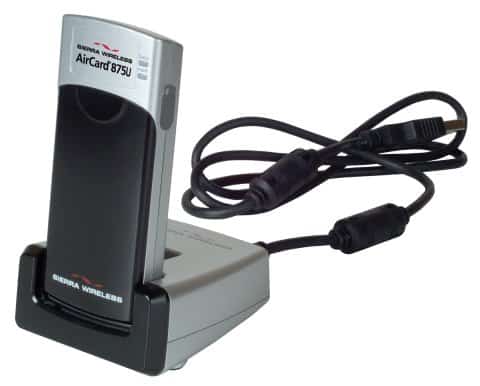Sierra Wireless CFO David McLennan talks about the sale of AirCard to Netgear

After having its stock halted for much of the day, Sierra Wireless (TSX:SW) announced, after market yesterday, that it had entered into an Asset Purchase Agreement with California-based Netgear. The deal will see that company acquire the operations of Sierra’s AirCard business. The purchase price is approximately $138 million in cash.
Sierra Wireless says it expects to realize net cash proceeds of approximately $100 million from the asset sale, after related taxes, expenses, and funds held in escrow. The transaction is expected to close in March 2013.
Cantech Letter’s Nick Waddell caught up with Sierra Wireless CFO David McLennan late yesterday to talk about the transaction.
David, what does the sale of your AirCard business mean to Sierra Wireless shareholders?
It’s another very important part of our migration to a pure play M2M business. We have had a long time strategy of positioning ourselves in the machine to machine market, and this is an important step down that path.
You mentioned in today’s release that you will be using the net proceeds to continue your acquisition strategy in the M2M space. Do you feel that this market focus is the best way for a company the size of Sierra Wireless to concentrate it efforts?
We’ve had a successful track record of buying and integrating machine-to-machine assets, going back to 2007 when we purchased Airlink Communications, which was an Intelligent Gateways business in the M2M space. In 2009, we entered the mainstream 2G business, as well as the solutions business with the acquisition of Wavecom. And in the middle of last year we augmented that with acquisition of Sagemcom. What we have done is to essentially monetize the AirCard part of our business and it frees up capital to continue to further our investment in to the M2M and connected solutions space.
Obviously you are moving into M2M in large part because you see good margins there…
Absolutely, and that’s been part of the long-term diversification theme in that it’s a more defensible business. First of all, you have diversification of customers; there are virtually thousands of machine-to-machine customers. And the gross margins of the products tend to be higher than in the AirCard product portfolio, which is more consumer type electronics profile. The M2M space, for us, is a blend of many customers. We have the “cheap and cheerful”, basic functionality 2G modules right through to more sophisticated 4G “latest and greatest” LT modules, and on top of that we have higher margin intelligent gateways that are also part of the M2M space. So it’s a blend of many customers, a blend of different products with different gross margins profiles that we think make it a more defensible business. Now with that comes a little more OPEX because you have to invest in the business and the customers tend to be a little more “higher touch” in the M2M space, meaning there is more support required from them from an OPEX perspective, but you get paid for that because the gross margin is higher.

There are a few assets you are keeping in mobile space, can you talk a bit about them?
Mobile computing was comprised of AirCards and embedded modules for laptops, for PC OEM’s. What we announced today was a sale of the AirCards business -essentially the products and the team that goes with it. We retained the embedded modules business. And when you think of it those products have a strong alignment with our M2M embedded modules business right now. In many respects its the same development process. We use the same products in the P2M space as we do with some our M2M embedded customers. So its a good fit.
Some of the numbers on the size of M2M coming out of CES this year were staggering. I think Cisco had figures that the number number of connected devices now exceeds the world population. They pegged the number at 8.2-billion, and expect it to rise to 15 billion by 2015 and 40 billion by 2020. Does this jive with Sierra’s internal view?
It’s hard to get your head around these kind of numbers, but the bottom line is this is a growth market. It’s hard to say whether this is going to be 15-billion or 20 or 25 billion, but the real point is that there will be very good growth to be had here. And because of how we have been at it for the past five year with respect to building capability and positioning our company in the M2M space, we are very well positioned to capture some of that growth.
You are netting about a $100-million from today’s sale. You said on today’s call you will be looking at more M2M acquisitions. Is this cash earmarked for anything else?
Yes. We will seek approval from the TSX to do a normal course issuer bid. We’ll seek approval for that process and be able to get back to the marketplace once we have gone through the approval process with the TSX. As we prioritize our use of capital, I think the number one priority is to profitably grow our machine-to-machine business and that’s why we’ll retain a sizable chunk of the proceeds from this divestiture to do just that. We’ve been active and have an active funnel of prospects and we think several of them are a good fit.
To wrap things up, I think it’s important to underscore today’s news by pointing out that M2M is not a new thing for Sierra Wireless, you have been at this for quite a while…
That’s a very good point because we have been at this a long time. We had an organic M2M business prior to the the Airlink acquisitions. We have steadily invested in M2M capability throughout this time. Today that puts is in the worldwide leadership role in the M2M space with about a 34% share and there’s a reason for that; we’ve just been heads down investing and executing. And what we did today does not surprise our shareholders at all, it’s right on point with our strategy.
___________________
Nick Waddell
Founder of Cantech Letter
Cantech Letter founder and editor Nick Waddell has lived in five Canadian provinces and is proud of his country's often overlooked contributions to the world of science and technology. Waddell takes a regular shift on the Canadian media circuit, making appearances on CTV, CBC and BNN, and contributing to publications such as Canadian Business and Business Insider.

